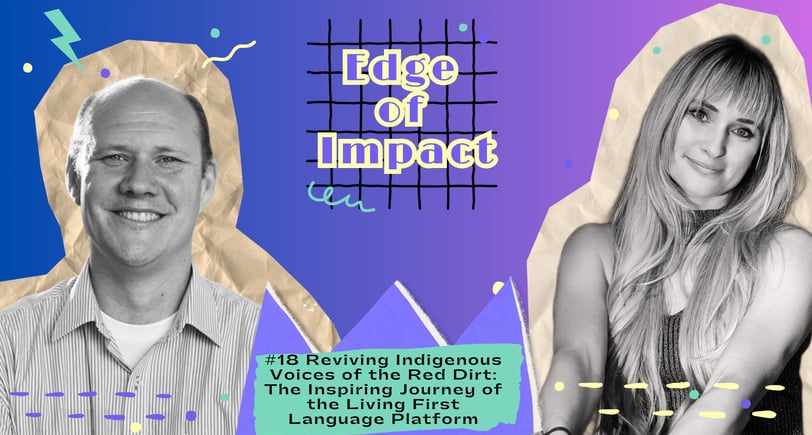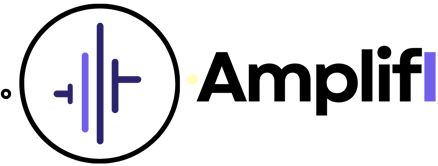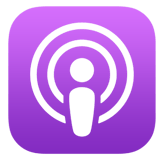#18 Reviving Indigenous Voices of the Red Dirt: The Inspiring Journey of the Living First Language Platform
Discover how the Digital Innovation at The Australian Literacy and Numeracy Foundation transforms Indigenous language preservation through the Living First Languages Platform. Inspired by elders like Mrs. Nixon Naka, the ALNF led by Eric Brace empowers communities to curate their own digital language resources, fostering cultural pride and intergenerational connection. From remote deserts to the Torres Strait, the platform bridges geographic and generational divides, ensuring Indigenous voices thrive. Join us to hear how Eric’s journey from listening to impact is revitalizing Australia’s linguistic heritage.
PODCAST
Odeta Ise
6/26/20255 min read


Let's dive into the Insight, Inspiration & Impact behind The Living First Languages Platform (LFLP) with Eric Brace
Follow & Support the The Living First Languages Platform (LFLP)
WSA Winning Year: 2019
Award: The World Summit Award
Category: Culture & Heritage
Founders: Naomi Fillmore, Eric Brace
Organisation: The Australian Literacy and Numeracy Foundation and The Living First Languages Platform Company
Country: Australia
On WSA website: https://wsa-global.org/winner/the-living-first-languages-platform-lflp/
In the heart of Australia's remote communities, where the red dirt stretches endlessly under vast skies, a quiet yet profound movement is taking shape. The Living First Language Platform, spearheaded by Eric Brace, Director of First Languages and Digital Innovation at The Australian Literacy and Numeracy Foundation (ALNF), is empowering Indigenous communities to preserve and share their languages. This story is one of inspiration born from listening, insight gained through collaboration, and impact achieved by centering community voices.
A Spark in the Desert
Eric Brace’s journey with the Living First Language Platform began not with a grand plan but with a conversation. In 2004, while working alongside his co-founder, Mary Ruth, a speech pathologist, Eric found himself in Tennant Creek, five hours north of Alice Springs. There, a Warumungui elder, Mrs. Nixon Nakkamarra, shared a vision: she wanted her children to read, write, speak, and listen in their native Warumungui language while also mastering English. She spoke of enabling children to “walk the red dirt and the red carpet,” thriving in both their cultural heritage and the broader world.
This moment struck a chord with Eric, whose background in speech pathology gave him a deep appreciation for the unique sounds and structures of Indigenous languages. Mrs. Nixon’s call for culturally relevant education, rooted in respect for Indigenous identity, set Eric and the ALNF on a path they hadn’t anticipated. What began as a literacy project evolved into a mission to preserve and revitalize Indigenous languages across Australia.
From Pen and Paper to Digital Empowerment
The early days were grounded in simplicity, with pen-and-paper resources capturing the essence of Indigenous languages. However, as technology became more accessible, Eric and his team saw an opportunity to create something more dynamic. In the early 2010s, they developed iPad apps for languages like Alyawarre, introducing children to letters, sounds, and dictionaries. These apps were a step forward, but they came with limitations: updates required developers, and the process could take weeks, creating a disconnect with communities eager to expand their resources.
This challenge sparked an insight: technology needed to be lightweight, accessible, and community-driven. The Living First Language Platform was born from this realization, designed to be device-agnostic, mobile-first, and adaptable to languages with thousands of speakers or just a handful. With seed funding from the Google Impact Challenge in Australia, the platform took shape, allowing communities to curate their own learning resources, from audio recordings to videos, in real time.
Today, the platform supports 17 Indigenous languages, with plans to expand to 22 by next year. Communities own and govern their digital spaces, ensuring that their cultural assets remain in their hands. This ethos of empowerment reflects the ALNF’s core value: technology is a tool, not the solution. Real change comes from the people who use it.
Building Trust, Bridging Generations
The platform’s impact goes beyond preserving words; it fosters connection and pride within communities. Each language project is led by a local language facilitator, often a young, tech-savvy individual, guided by elders and a language advisory group. This intergenerational collaboration creates a vibrant ecosystem where stories, memories, and knowledge are shared. Eric recounts moments when elders, prompted by the platform, recall words not spoken in decades, sparking days of conversation and renewed cultural pride.
In the Torres Strait, a language teacher’s work with the platform led to a NAIDOC Award for caring for Country and Culture. Her efforts, supported by partnerships with organizations like Curious Learning in Boston, have not only preserved a language with just four remaining speakers but also boosted literacy outcomes on her island, outperforming others in the region. Children playing educational games hear the voices of their aunties, grandmas, and uncles, forging a personal connection to their heritage. This ripple effect extends to adult literacy centers and community gatherings, where the platform becomes a catalyst for unity.
The platform also bridges geographic divides. In remote areas like the Central Desert or the Torres Strait Islands, resources created in one community can be shared across vast distances, ensuring that even languages with few speakers are documented and celebrated. For a Warumungui community with 350 speakers, a tool downloaded over 950 times has sparked excitement, as more people engage with their language than ever before.
Challenges and Aspirations
Despite its success, the ALNF faces challenges in meeting growing demand. At the Indigenous Language and Technology Conference, 35 additional languages expressed interest in adopting the platform. Scaling up responsibly while keeping costs accessible is a hurdle, as many communities rely on grants or local sponsorships. Eric envisions a model where communities can crowdsource funds from local businesses, reducing dependence on external funding and enabling faster onboarding.
Looking ahead, Eric is excited about organic growth within Australia and potential international expansion, with discussions underway in the US, Canada, and Belfast. His vision isn’t about flashy technology like AI or augmented reality, though he sees their potential. Instead, he dreams of “language dosage,” where children are immersed in their language through face-to-face interactions, language camps, and digital tools that reinforce learning in everyday moments. He imagines a future where the next generation of Indigenous children grows up with more speakers than the last, writing poetry and stories in their native tongues.
A Legacy of Listening
The Living First Language Platform is more than a digital tool; it’s a testament to the power of listening. Eric and the ALNF didn’t set out to work with Indigenous languages, but by hearing the needs of communities, they built a platform that empowers them to tell their own stories. In a country where a recent referendum failed to recognize an Indigenous voice in the Constitution, this work is a quiet act of reconciliation, making people curious about Australia’s linguistic diversity and the wisdom embedded in its cultures.
For Eric, the platform’s success lies in its human impact: a child discovering patterns in their language, an elder’s voice preserved for future generations, a community supermarket posting a “word of the week” to weave heritage into daily life. By centering community ownership and cultural respect, the Living First Language Platform is helping Indigenous Australians walk both the red dirt and the red carpet, with pride in who they are and where they come from.








